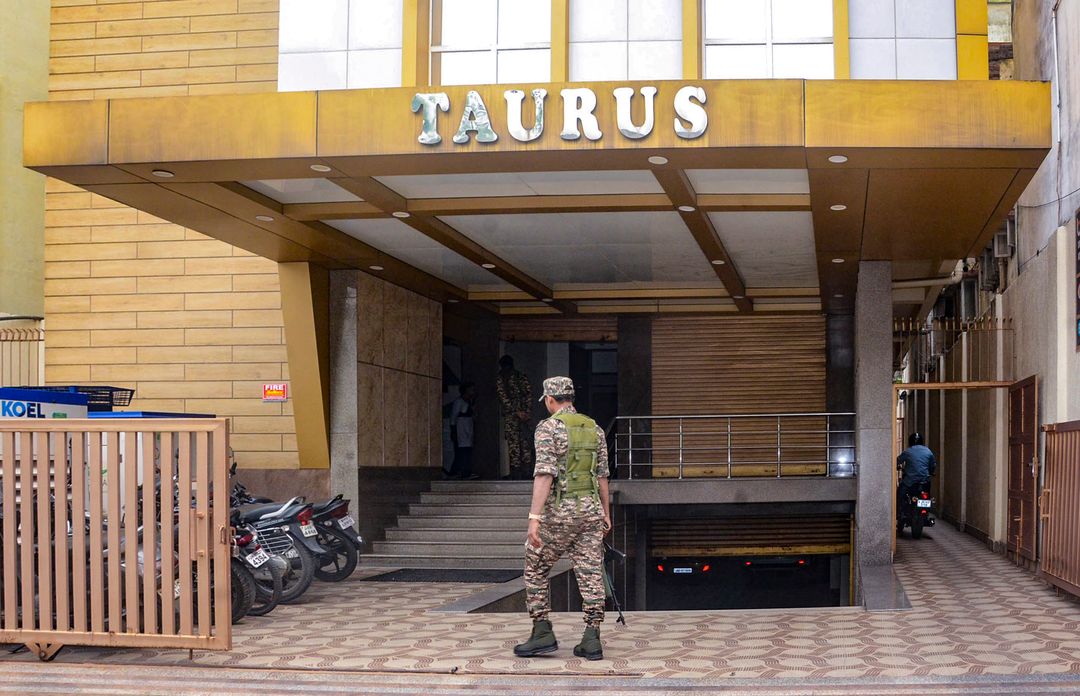New Delhi, Feb 4 (PTI) – More than 8.5 crore treatments have been provided under the Ayushman Bharat Pradhan Mantri Jan Arogya Yojana (AB-PMJAY) as of January 31, 2025, Union Health Minister J.P. Nadda informed the Rajya Sabha on Tuesday.
Out of these treatments, approximately 4.2 crore were conducted in government hospitals, while around 4.3 crore were in private healthcare facilities, Nadda said in response to a parliamentary query.
Nationwide Coverage, But Exceptions in Two Regions
The AB-PMJAY scheme has been rolled out across all states and Union Territories, with the notable exceptions of West Bengal and the National Capital Territory (NCT) of Delhi, the minister stated.
A Landmark Health Initiative for Vulnerable Populations
Launched as a flagship initiative, AB-PMJAY provides a health cover of ₹5 lakh per family annually for secondary and tertiary care hospitalizations. The scheme targets approximately 55 crore beneficiaries, corresponding to 12.37 crore families, and aims to provide healthcare access to the economically vulnerable 40% of India’s population.
In a recent expansion, the government extended coverage to an additional 6 crore senior citizens aged 70 years and above, from 4.5 crore families. This extension applies irrespective of their socio-economic status, under the Vay Vandana card initiative, Nadda highlighted.
Comprehensive Healthcare Model with Flexibility at Local Levels
The AB-PMJAY offers in-patient healthcare services through both public and private empanelled hospitals, ensuring access to secondary and tertiary care.
Implemented through a three-tiered structure involving the National Health Authority (NHA), State Health Agencies (SHAs), and District Implementation Units (DIUs), the scheme operates at national, state, and district levels. Nadda explained that each state has established its own SHA, which serves as the central body for AB-PMJAY implementation in that region. These SHAs are headed by a Chief Executive Officer (CEO), appointed by the respective state governments.
For more efficient local execution, SHAs have the flexibility to hire additional staff, enlist an insurance company, or appoint an Implementation Support Agency (ISA). States and UTs are given the autonomy to choose an operational model—whether trust, insurance, or hybrid—best suited to their specific needs.
Diverse Operational Models Across States
Currently, 25 states and UTs are implementing AB-PMJAY in trust mode, 7 in insurance mode, and 2 states have adopted a hybrid approach. Nadda emphasized that this flexibility allows for better tailoring of the scheme to local conditions.
Growing Healthcare Access and Expansion
Under AB-PMJAY, eligible beneficiaries can access healthcare services free of charge up to ₹5 lakh per family per year for hospitalization across 27 different medical specialties. The scheme continues to evolve, with new medical procedures, hospital empanelments, and the inclusion of additional beneficiaries, ensuring that healthcare access expands according to the changing needs of the population.
The continued growth of the program reflects the government’s commitment to providing equitable and comprehensive healthcare coverage to millions of underserved Indians.
Out of these treatments, approximately 4.2 crore were conducted in government hospitals, while around 4.3 crore were in private healthcare facilities, Nadda said in response to a parliamentary query.
Nationwide Coverage, But Exceptions in Two Regions
The AB-PMJAY scheme has been rolled out across all states and Union Territories, with the notable exceptions of West Bengal and the National Capital Territory (NCT) of Delhi, the minister stated.
A Landmark Health Initiative for Vulnerable Populations
Launched as a flagship initiative, AB-PMJAY provides a health cover of ₹5 lakh per family annually for secondary and tertiary care hospitalizations. The scheme targets approximately 55 crore beneficiaries, corresponding to 12.37 crore families, and aims to provide healthcare access to the economically vulnerable 40% of India’s population.
In a recent expansion, the government extended coverage to an additional 6 crore senior citizens aged 70 years and above, from 4.5 crore families. This extension applies irrespective of their socio-economic status, under the Vay Vandana card initiative, Nadda highlighted.
Comprehensive Healthcare Model with Flexibility at Local Levels
The AB-PMJAY offers in-patient healthcare services through both public and private empanelled hospitals, ensuring access to secondary and tertiary care.
Implemented through a three-tiered structure involving the National Health Authority (NHA), State Health Agencies (SHAs), and District Implementation Units (DIUs), the scheme operates at national, state, and district levels. Nadda explained that each state has established its own SHA, which serves as the central body for AB-PMJAY implementation in that region. These SHAs are headed by a Chief Executive Officer (CEO), appointed by the respective state governments.
For more efficient local execution, SHAs have the flexibility to hire additional staff, enlist an insurance company, or appoint an Implementation Support Agency (ISA). States and UTs are given the autonomy to choose an operational model—whether trust, insurance, or hybrid—best suited to their specific needs.
Diverse Operational Models Across States
Currently, 25 states and UTs are implementing AB-PMJAY in trust mode, 7 in insurance mode, and 2 states have adopted a hybrid approach. Nadda emphasized that this flexibility allows for better tailoring of the scheme to local conditions.
Growing Healthcare Access and Expansion
Under AB-PMJAY, eligible beneficiaries can access healthcare services free of charge up to ₹5 lakh per family per year for hospitalization across 27 different medical specialties. The scheme continues to evolve, with new medical procedures, hospital empanelments, and the inclusion of additional beneficiaries, ensuring that healthcare access expands according to the changing needs of the population.
The continued growth of the program reflects the government’s commitment to providing equitable and comprehensive healthcare coverage to millions of underserved Indians.
Last updated by a enewsx:

